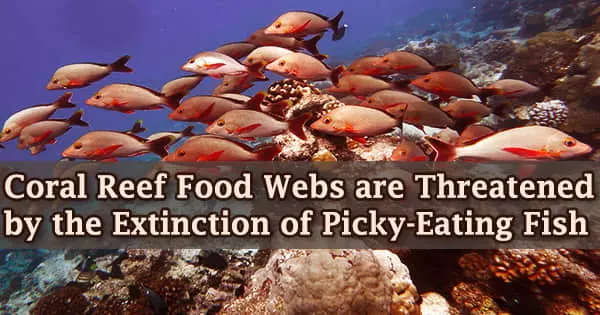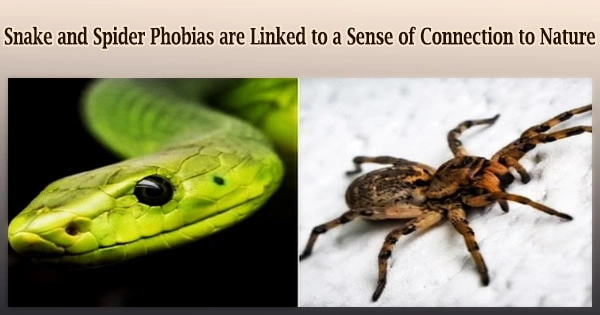Coral reefs throughout the world are already threatened by rising temperatures brought on by climate change, and the risk of fish species extinction adds to the mix. Coral reefs are massive underwater constructions made up of the bones of colonial marine invertebrates.
The networks of predator fish and their prey found on coral reefs all over the globe are very similar, according to a report published today (September 20, 2021) in the Proceedings of the National Academy of Sciences, and those predator fish are pickier eaters than previously imagined. When these specialized hunters become extinct, these sensitive ecosystems become even more susceptible.
All of the food networks in a single ecosystem make into a food web. In an ecosystem, every living organism is a part of several food chains. Each food chain represents one possible way for energy and minerals to travel through the ecosystem.
Coral reefs are among the world’s most diversified ecosystems, providing a crucial home for thousands of species that support economies and provide food for millions of people. Because they absorb calcium carbonate from saltwater to construct a hard, resilient exoskeleton that covers their soft, sac-like bodies, coral species that build reefs are known as hermatypic, or “hard,” corals.
Researchers from France and The University of Texas at Austin discovered that coral reef food webs are more sensitive than previously assumed in the broadest and most extensive study of their type. After analyzing the stomach contents of most fish species found on six coral reef systems throughout the world, researchers came at this result.
It’s remarkable that we see similar patterns in coral reef systems all over the world. Extinctions, particularly of larger fish species, may have significant impacts for coral reef systems.
Jordan Casey
The researchers discovered that the great majority of reef fish species are choosy about what they consume, rather than grazing on anything they can find. Although reefs are likely to survive the extinction of numerous prey species, the extinction of a single bigger fish species might put the ecosystem in jeopardy.
The fish stand out among the many occupants as being very colorful and entertaining to observe. A healthy reef can include hundreds of species, many of which are buried or well disguised. Reef fish have evolved a variety of innovative adaptations to help them survive on the reefs.
No one marine species can thrive without another, from the greatest apex predators like the White-tipped Reef Shark to minute creatures like Phytoplankton, and this is mirrored in the fact that if one life type becomes threatened, the remainder of the reef suffers.
“It’s remarkable that we see similar patterns in coral reef systems all over the world. Extinctions, particularly of larger fish species, may have significant impacts for coral reef systems,” said Jordan Casey, an assistant professor of marine science at UT Austin’s Marine Science Institute (UTMSI) and an author on the paper.
Climate change, commercial fishing, and pollution are just a few of the factors that might lead to local fish species extinction. As a result of these fish losses, an increasing quantity of prey may go uneaten, causing food web imbalances.
“Reefs rely on the efficient utilization of all creatures,” said Simon Brandl, also an author and an assistant professor at UTMSI. “If a fish specializes on eating a certain type of snail and that fish disappears, the snail might not be eaten and live happily ever after. This creates a dead-end for the food it could provide to other coral reef creatures. Good news for the snail. Bad news for everything else living there.”
More than 600 species of coral reef fish were studied on six separate coral reefs around Okinawa, Hawaii, the West Indies, New Caledonia, Madagascar, and the Marshall Islands.
Despite the enormous range of available food in coral reefs, the food webs had a strikingly similar structure: 67 percent of species were specialist feeders with strong preferences for specific prey items.
Corals may be found all across the world’s oceans, from Alaska’s the Aleutian Islands to the Caribbean Sea’s balmy tropical waters. The largest coral reefs are located in the tropics and subtropics, where the water is clear and shallow. The Great Barrier Reef in Australia is the world’s biggest coral reef system, stretching over 1,500 miles (2,400 kilometers).
“Coral reefs are important to humans for a number of reasons,” Casey said. “They are a critical source of food for many people. They are also popular tourist destinations and economic engines for a number of countries. However, coral reefs can only provide these key ecosystem services if food webs remain intact.”
















